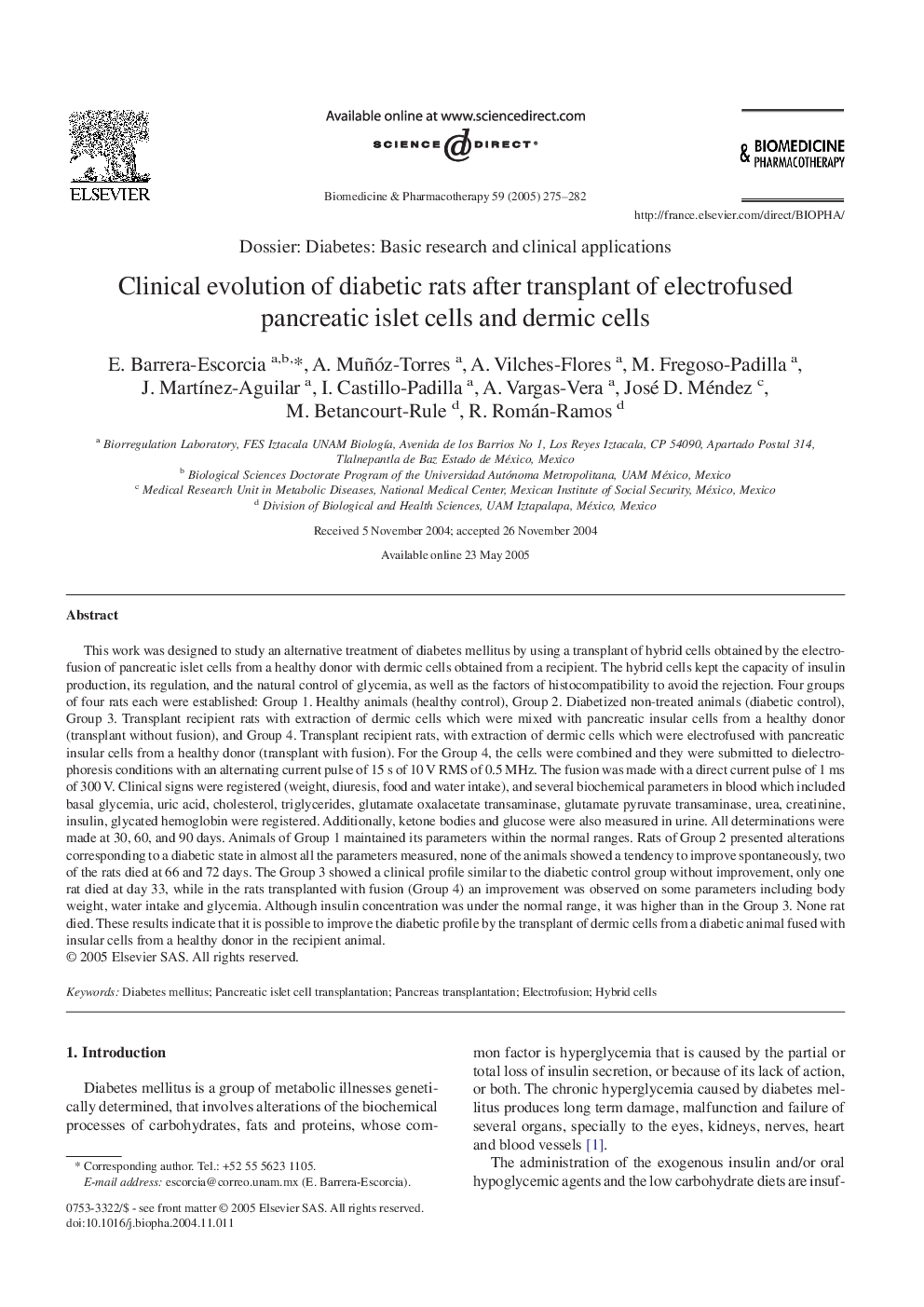| Article ID | Journal | Published Year | Pages | File Type |
|---|---|---|---|---|
| 9004410 | Biomedicine & Pharmacotherapy | 2005 | 8 Pages |
Abstract
This work was designed to study an alternative treatment of diabetes mellitus by using a transplant of hybrid cells obtained by the electrofusion of pancreatic islet cells from a healthy donor with dermic cells obtained from a recipient. The hybrid cells kept the capacity of insulin production, its regulation, and the natural control of glycemia, as well as the factors of histocompatibility to avoid the rejection. Four groups of four rats each were established: Group 1. Healthy animals (healthy control), Group 2. Diabetized non-treated animals (diabetic control), Group 3. Transplant recipient rats with extraction of dermic cells which were mixed with pancreatic insular cells from a healthy donor (transplant without fusion), and Group 4. Transplant recipient rats, with extraction of dermic cells which were electrofused with pancreatic insular cells from a healthy donor (transplant with fusion). For the Group 4, the cells were combined and they were submitted to dielectrophoresis conditions with an alternating current pulse of 15Â s of 10Â V RMS of 0.5Â MHz. The fusion was made with a direct current pulse of 1Â ms of 300Â V. Clinical signs were registered (weight, diuresis, food and water intake), and several biochemical parameters in blood which included basal glycemia, uric acid, cholesterol, triglycerides, glutamate oxalacetate transaminase, glutamate pyruvate transaminase, urea, creatinine, insulin, glycated hemoglobin were registered. Additionally, ketone bodies and glucose were also measured in urine. All determinations were made at 30, 60, and 90Â days. Animals of Group 1 maintained its parameters within the normal ranges. Rats of Group 2 presented alterations corresponding to a diabetic state in almost all the parameters measured, none of the animals showed a tendency to improve spontaneously, two of the rats died at 66 and 72Â days. The Group 3 showed a clinical profile similar to the diabetic control group without improvement, only one rat died at day 33, while in the rats transplanted with fusion (Group 4) an improvement was observed on some parameters including body weight, water intake and glycemia. Although insulin concentration was under the normal range, it was higher than in the Group 3. None rat died. These results indicate that it is possible to improve the diabetic profile by the transplant of dermic cells from a diabetic animal fused with insular cells from a healthy donor in the recipient animal.
Related Topics
Health Sciences
Medicine and Dentistry
Oncology
Authors
E. Barrera-Escorcia, A. Muñóz-Torres, A. Vilches-Flores, M. Fregoso-Padilla, J. MartÃnez-Aguilar, I. Castillo-Padilla, A. Vargas-Vera, José D. Méndez, M. Betancourt-Rule, R. Román-Ramos,
